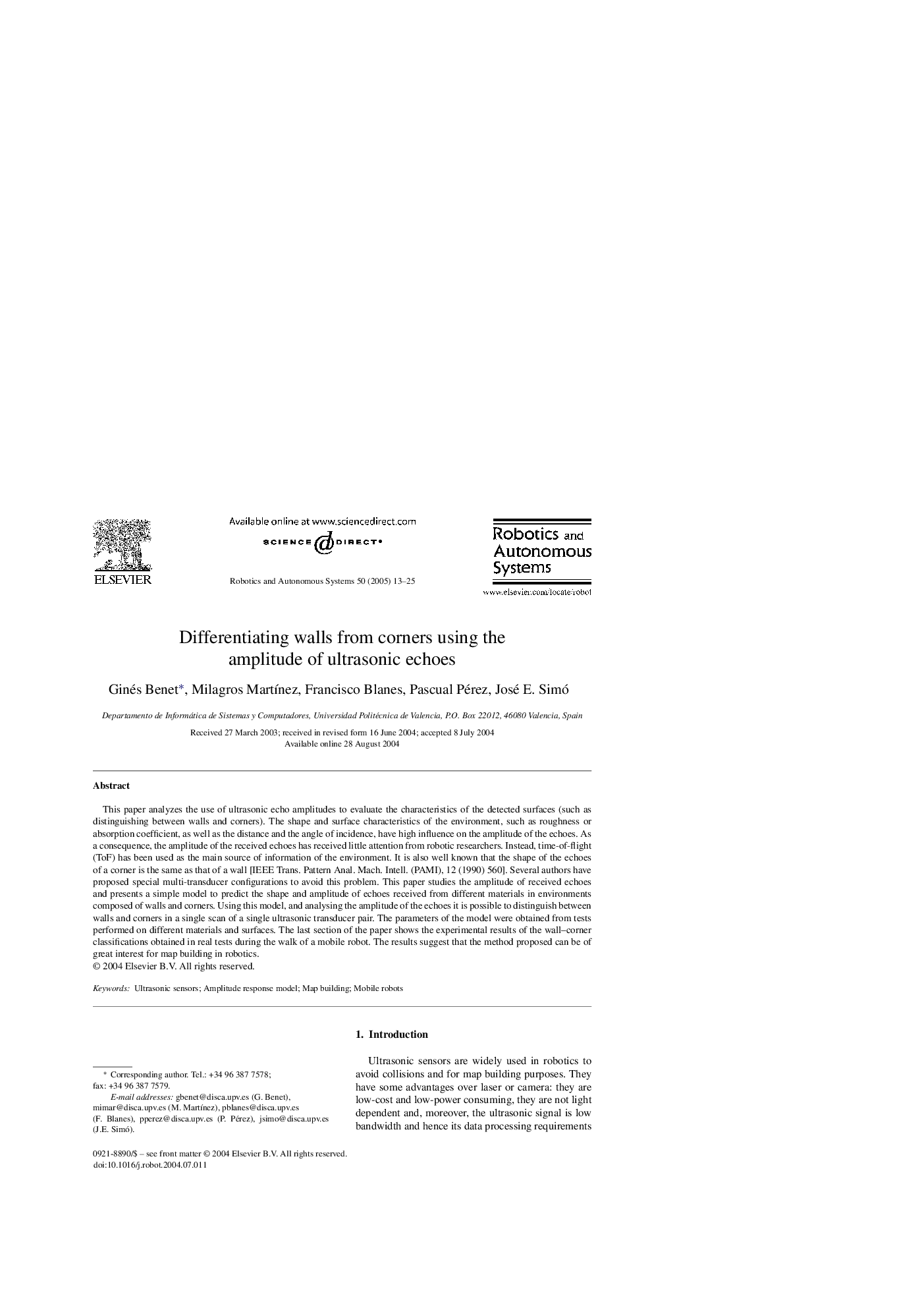| Article ID | Journal | Published Year | Pages | File Type |
|---|---|---|---|---|
| 10326914 | Robotics and Autonomous Systems | 2005 | 13 Pages |
Abstract
This paper analyzes the use of ultrasonic echo amplitudes to evaluate the characteristics of the detected surfaces (such as distinguishing between walls and corners). The shape and surface characteristics of the environment, such as roughness or absorption coefficient, as well as the distance and the angle of incidence, have high influence on the amplitude of the echoes. As a consequence, the amplitude of the received echoes has received little attention from robotic researchers. Instead, time-of-flight (ToF) has been used as the main source of information of the environment. It is also well known that the shape of the echoes of a corner is the same as that of a wall [IEEE Trans. Pattern Anal. Mach. Intell. (PAMI), 12 (1990) 560]. Several authors have proposed special multi-transducer configurations to avoid this problem. This paper studies the amplitude of received echoes and presents a simple model to predict the shape and amplitude of echoes received from different materials in environments composed of walls and corners. Using this model, and analysing the amplitude of the echoes it is possible to distinguish between walls and corners in a single scan of a single ultrasonic transducer pair. The parameters of the model were obtained from tests performed on different materials and surfaces. The last section of the paper shows the experimental results of the wall-corner classifications obtained in real tests during the walk of a mobile robot. The results suggest that the method proposed can be of great interest for map building in robotics.
Related Topics
Physical Sciences and Engineering
Computer Science
Artificial Intelligence
Authors
Ginés Benet, Milagros MartÃnez, Francisco Blanes, Pascual Pérez, José E. Simó,
